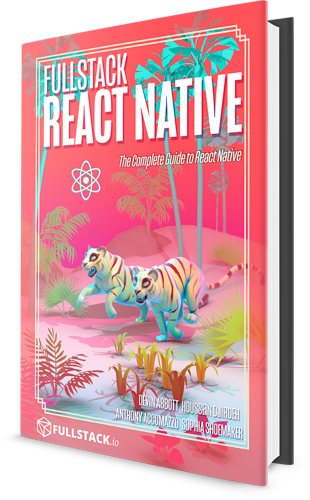App Development
Now that we've covered React and React Native core components, we're able to create the screens of our UI. However, there's much more that we need to cover in order to develop a full app.
In this section, we'll cover the following topics:
- Project Structure: Directory structure and separation of concerns in our UI components
- Navigation: Creating an app with multiple screens, and transitioning between them (i.e. routing)
- Data Management: Storing data and passing it into our React components
- Persistence: Persisting app data locally on the device
- Networking: Making network requests to fetch data
- Animation: Making things move
- Gestures: Supporting complex touch interactions, like dragging
- Component Libraries: Bootstrapping an app with a design system library
- Native Modules: Accessing native device functionality
Some of these topics should be very familiar to web developers, so feel free to skip around.
Want to learn React Native in-depth?
If you like React Native Express, you'll love my new book, Fullstack React Native: The complete guide to React Native! Throughout the book, we'll build 7 full apps, covering complex topics like navigation, gestures, and native modules. We don't assume any knowledge of React or newer JavaScript language features, so you can dive right in regardless of your experience level. The book comes in PDF, EPUB and MOBI formats.
Community Resources
Looking for more help?
Infinite Red sponsors React Native Express and is the premier React Native agency. They're also the team behind the React Native newsletter, podcast, and conference listed here. Get in touch at infinite.red/react-native for a proposal on your next project!
